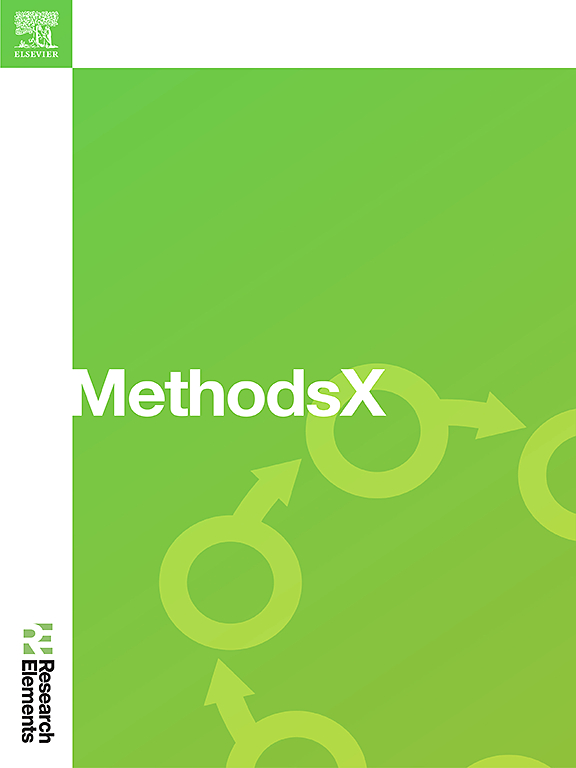Innovative IoT-enabled mask detection system: A hybrid deep learning approach for public health applications
IF 1.6
Q2 MULTIDISCIPLINARY SCIENCES
引用次数: 0
Abstract
The integration of IoT and deep learning has revolutionized real-time monitoring systems, particularly in public health applications such as face mask detection. With increasing public reliance on these technologies, robust and efficient frameworks are critical for ensuring compliance with health measures. Existing models, on the other hand, often have problems, such as being slow to compute, not being able to work well in a wide range of environments, and not being able to adapt well to IoT devices with limited resources. These shortcomings highlight the need for an optimized and scalable solution. To address these issues, this study utilizes three datasets: the Kaggle Face Mask Dataset, the Public Places Dataset, and the Public Videos Dataset, encompassing varied environmental conditions and use cases. The proposed framework integrates ResNet50 and MobileNetV2 architectures, optimized using the Adaptive Flame-Sailfish Optimization (AFSO) algorithm. This hybrid approach enhances detection accuracy and computational efficiency, making it suitable for real-time deployment. The novelty of the paper lies in combining AFSO with a hybrid deep learning architecture for parameter optimization and improved scalability. Performance metrics such as accuracy, sensitivity, precision, and F1-score were used to evaluate the model. The proposed framework achieved an accuracy of 97.8 % on the Kaggle dataset, significantly outperforming baseline models and demonstrating its robustness and efficiency for IoT-enabled face mask detection systems.
- •The article introduces a novel hybrid framework that combines ResNet50 and MobileNetV2 architectures optimized with Adaptive Flame-Sailfish Optimization (AFSO).
- •The system demonstrates superior performance, achieving 97.8 % accuracy on the Kaggle dataset, with improved efficiency for IoT-based real-time applications.
- •Validates the framework's robustness and scalability across diverse datasets, addressing computational and environmental challenges.

创新的物联网口罩检测系统:用于公共卫生应用的混合深度学习方法
物联网和深度学习的融合彻底改变了实时监测系统,特别是在口罩检测等公共卫生应用中。随着公众越来越依赖这些技术,强有力和有效的框架对于确保遵守卫生措施至关重要。另一方面,现有模型通常存在问题,例如计算速度慢,不能在广泛的环境中正常工作,不能很好地适应资源有限的物联网设备。这些缺点突出了对优化和可扩展解决方案的需求。为了解决这些问题,本研究使用了三个数据集:Kaggle面罩数据集、公共场所数据集和公共视频数据集,包括不同的环境条件和用例。该框架集成了ResNet50和MobileNetV2架构,并使用自适应火焰-旗鱼优化(AFSO)算法进行了优化。这种混合方法提高了检测精度和计算效率,适合于实时部署。本文的新颖之处在于将AFSO与用于参数优化和提高可扩展性的混合深度学习架构相结合。使用准确性、灵敏度、精密度和f1评分等性能指标来评估模型。该框架在Kaggle数据集上实现了97.8%的准确率,显著优于基线模型,并证明了其在支持物联网的面罩检测系统中的鲁棒性和效率。•本文介绍了一种新的混合框架,该框架结合了ResNet50和MobileNetV2架构,并通过自适应火焰旗鱼优化(AFSO)进行了优化。•该系统表现出卓越的性能,在Kaggle数据集上达到97.8%的准确率,提高了基于物联网的实时应用的效率。•验证框架在不同数据集上的稳健性和可扩展性,解决计算和环境挑战。
本文章由计算机程序翻译,如有差异,请以英文原文为准。
求助全文
约1分钟内获得全文
求助全文
来源期刊

MethodsX
Health Professions-Medical Laboratory Technology
CiteScore
3.60
自引率
5.30%
发文量
314
审稿时长
7 weeks
期刊介绍:
 求助内容:
求助内容: 应助结果提醒方式:
应助结果提醒方式:


